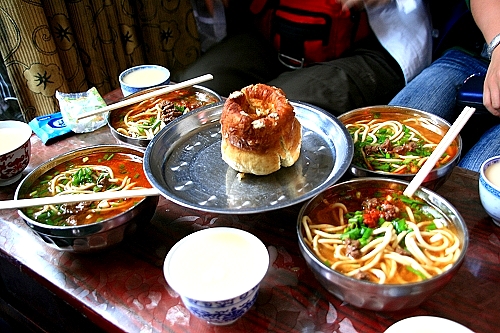Buddhist prayer flags in Tibet
The five-colored prayer flags are hung on peaks, mountain passes, or by roads and monasteries in Tibet. To Tibetan Buddhism believers, each waving of the flags means reciting the scripture once, sending wishes of sentient beings to deities. In the way, the prayer flags serve as connection between human beings and the deities. The…
.jpg)


















